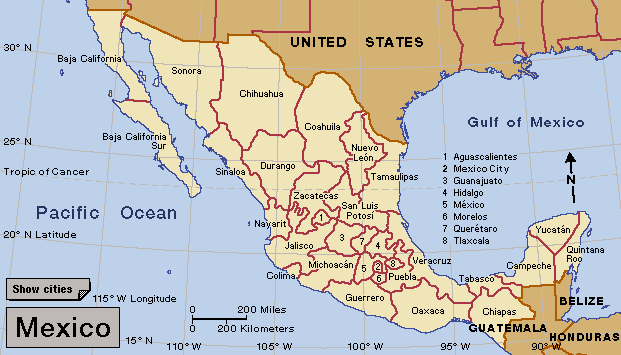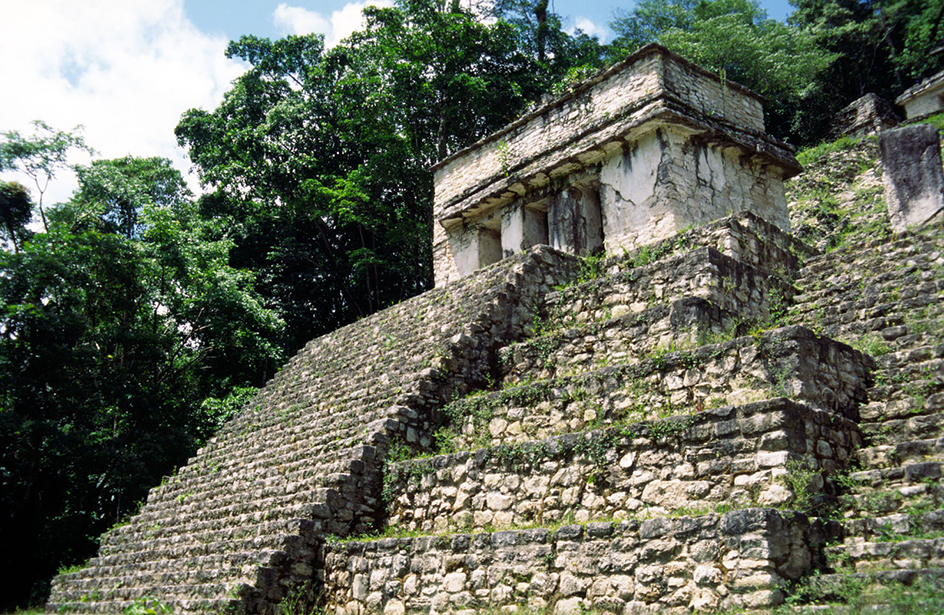Chiapas << chee AHP ahs, >> is a state in southeastern Mexico. It covers 28,653 square miles (74,211 square kilometers) and shares its eastern border with the country of Guatemala. At the time of the 2020 census, Chiapas had a population of 5,543,828. Compared with other Mexican states, it has a high concentration of American Indians, who make up much of the population. The dominant language is Spanish, but in many rural areas, the people speak Indian languages. The state capital is Tuxtla Gutierrez.

Chiapas has a varied landscape. Geographical features include the Sierra Madre de Chiapas mountains in the southwest, the Chiapas Highlands in the center of the state, and tropical rain forests in the southeast. Chiapas also contains the ruins of Maya cities at Bonampak, Palenque, and Yaxchilan. Some of the oldest ceramics found in Mexico, dating from about 1700 to 1500 B.C., were discovered in Mazatan, a coastal region of Chiapas. Products of Chiapas include beef, cacao, coffee, hydroelectric power, petroleum, and timber.
The Spanish explorer Diego de Mazariegos subdued the Indians of Chiapas in the late 1520’s. Spanish colonists who followed lived on tribute payments that they collected from the Indians. The Spanish later developed large farms, called fincas or haciendas, that displaced Indian villages. About 1940, some land that the Spanish had taken was redistributed to the native people. But cultural hostility and social inequality have persisted between people of European and Indian origin. Chiapas was one of the original states of Mexico, which won its independence in 1821.

About 1970, people began moving into the rain forests in southeastern Chiapas. Deforestation (destruction and degrading of forests) and agricultural development followed the arrival of the settlers, sparking ethnic and political conflict during the 1990’s. In early January 1994, Maya Indians took control of several towns in Chiapas. The rebel group called itself the Zapatista Army of National Liberation. More than 100 people were killed in fighting between the Zapatistas and government troops. The government regained possession of the towns within two weeks and declared a cease-fire on January 12. The Zapatistas continued to campaign against the poverty and discrimination faced by Mexico’s Indians.
